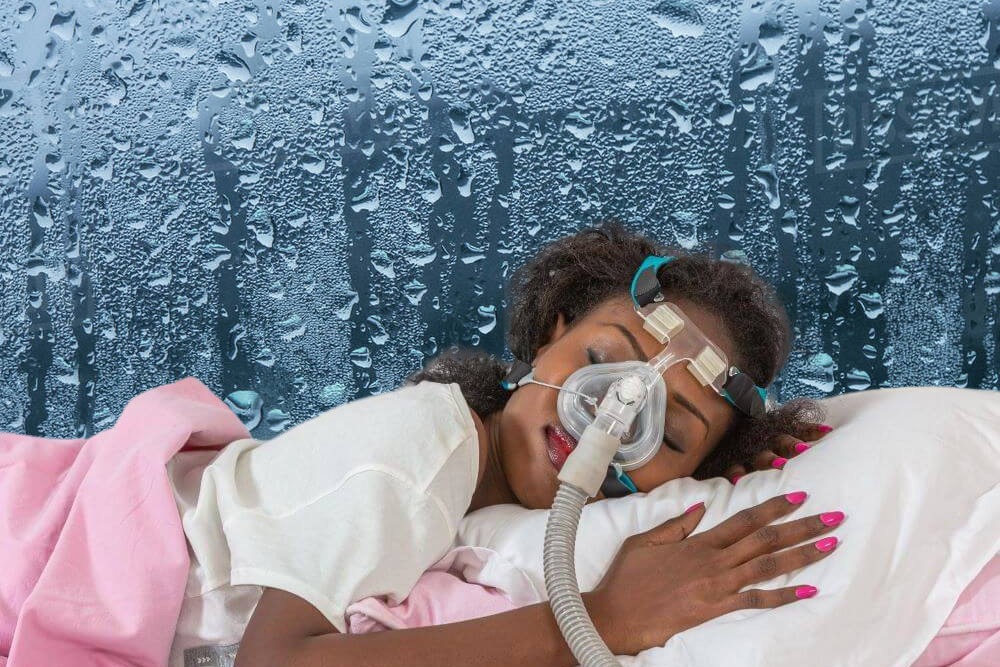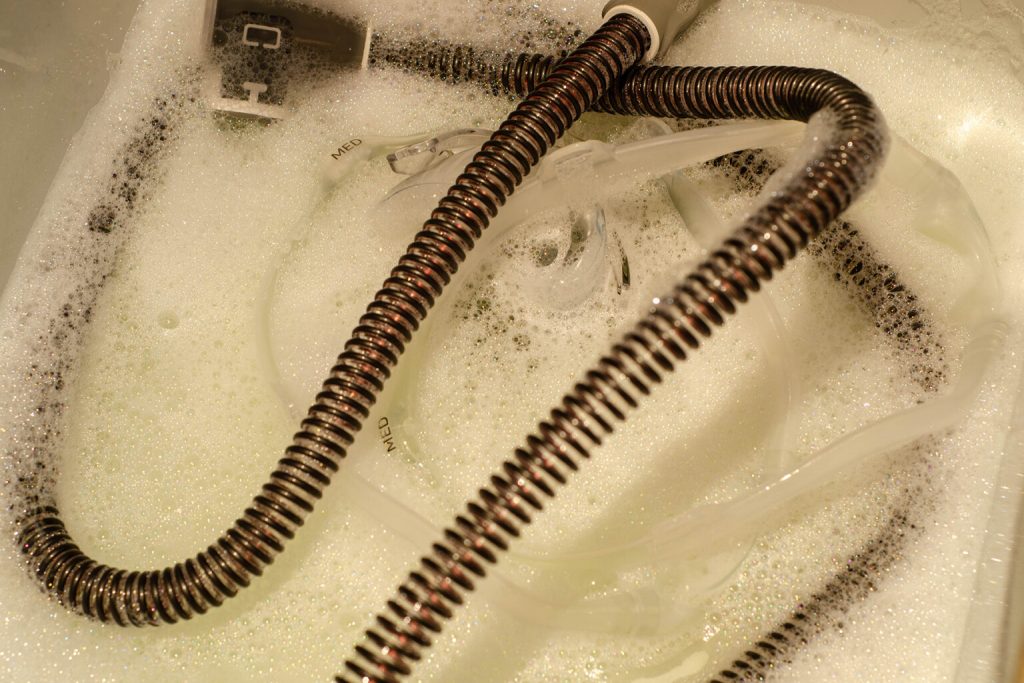Last Updated on August 24, 2021
Many patients derive a lot of comfort from getting proper humidification. Yes, this is the secret to their happiness while using a CPAP machine. How does it all work?
Essentially, humidified air helps many sleep apnea patients avoid cold-air-related damage to sensitive lung tissues. It also helps deal with problems like mouth dryness. Regardless, humidification comes with a rather uncomfortable side-effect; rain out.
But how does rain out occur? How can you avoid it?
Let’s find out:
What’s the Meaning of “CPAP Rainout”?
Generally, when your tubing’s heated air cools( reaching your mask as water), CPAP rainout occurs. In turn, this can cause you to get a damp face. Essentially, this uncomfortable sensation (due to the feeling of water on the face) can wake patients from sleep.
Another unpleasant can come from the gurgling in the tube (resulting from condensation). Even after waking up, some will experience anxiety. Others who deal with claustrophobia might face worse challenges.
To avoid rainout in the future, you can take the following steps:
Use a Heated Tubing:
Typically, the heated air cooling in the tubing is what causes rainout. When you use a heated tube, you can sustain the air’s optimum temperature until it reaches the mask. To keep the air inside the tubing ever warm, most heated tubes are designed with copper wiring.
A tube jacket:
Assuming you already have the tubing, ask your home medical equipment supplier to deliver a standard tubing wrap that can keep the air inside the tubing warm. If you live in a very cold room, you’ll find this particularly helpful.
Other Steps to Prevent CPAP Rainout
Yes, what can you do to prevent this phenomenon from taking place? The idea is pretty simple; try to match-as closely as possible- the temperature both on the inside and outside of the tubing.
Change the Temperature Difference
This is a less expensive and simpler option- you only have to adjust the heated humidifier and your bedroom’s temperature. You should either turn down the humidifier temperature or turn up your bedroom’s thermostat. Since you might find it more comfortable to sleep inside a cold room, simply adjust the humidifier for a start.
Heated Tubing
Aconvenient option for most people is to use a climate line or a heated tub that delivers warm, moist air to the CPAP mask from the heated humidifier. This maximizes the benefit of using the humidifier.
Interestingly, all the leading CPAP equipment manufacturers now design their latest products with heated or climate line tubing. Further, these are designed with a heated coil running through the length of the tube. In turn, this keeps the air inside warm.
Typically, the power is usually integrated into the back of the CPAP machine. Once this is done, the tubing will connect easily to the mask interfaces. It’s also possible to buy a separate component of the heated tubing (this is known as the Hybernite). It is often used with older machines.
It’s advisable to set the tubing temperature at around 78-82 degrees. This reduces the possibility of water forming in the equipment.
Cover the CPAP Tubing
Here’s another option: Put your CPAP tubing right under the bed covers. This helps to warm the tube, thus reducing condensation. You can use some modern fabric coverings to insulate the tubing. One popular model is called the SnuggleHose. You get them in various patterns, colors, and fabrics. You can even get a little bit creative- you can easily make similar covers with a sewing machine and a long piece of fabric, a needle, and a thread.
Place the CPAP on the Floor
Simply put the CPAP machine down on the floor. When you put it in a lower position than your place on the bed, the moisture collected within the tubing will be forced back to the humidifier. This prevents it from dousing you in the face while you sleep at night.
Is it Dangerous to Have CPAP Rainout?
As noted, rainout occurs when your room’s temperature is colder than the humidified air’s temperature (traveling through your hose). In the end, the built-up condensation in the CPAP hose will splash right onto your face- this is a most unpleasant situation.
Note that apart from the annoyance, the water droplets aren’t really dangerous. While it might feel like it’s a lot, it really isn’t; yes, you won’t drown! Nevertheless, this will disturb your sleep-and no one likes that.
Of course, moisture is always a good breeding ground for bacteria. Therefore, the CPAP mask and hose should be cleaned at least once a week. For greater safety, it makes sense to use a CPAP cleaner that uses activated ozone or ultraviolet light for disinfection.
This is undoubtedly good advice for everyone.
Final Thoughts
Well, can you develop lung problems due to CPAP rainout? The truth is, inflammation along the airway usually improves while using the CPAP. This can irritate the lungs and airways and cause increased coughing. It might even lead to other complications like pneumonia, bronchitis or pneumonitis, or inflammation of the lungs.
But, as noted here, you do not need to worry. Why? Overall, these are rare occurrences. Simply take the precautions outlined here and use these excellent tips. You’ll stay safe using your CPAP.



